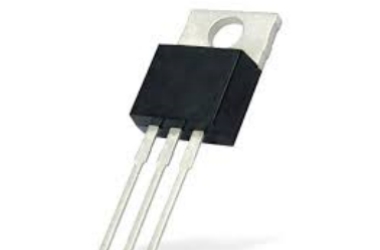Advantages and applications of high-temperature thyristors in power systems
High-temperature thyristor is a semiconductor switching device specially designed for high-temperature environments. It not only has the unidirectional conductivity of ordinary thyristor but also maintains stable performance in high-temperature environments. This device is very important for power systems operating in harsh environments.
The main characteristics of high-temperature thyristor
1. High-temperature stability: The biggest feature of high-temperature thyristor design is to remain stable in high-temperature environments. This means it guarantees reliable switching operation even in high-temperature environments.
2. High withstand voltage capability: This type of thyristor is usually able to withstand high voltage, providing a more stable operating environment for the power system.
3. Efficient thermal management: The high-temperature thyristor has excellent thermal management capabilities and can effectively export the heat generated internally to avoid the impact of overheating on device performance.

The application of high-temperature thyristors is mainly concentrated in power systems under high temperatures and harsh environments, such as aerospace, metallurgy, and other fields. Because high-temperature thyristors maintain stable performance in high-temperature environments, they ensure the stability and reliability of power systems in these environments. In addition, the high-temperature thyristor's high withstand voltage capability and low conduction loss also make it widely used in power transmission, frequency conversion control, and other power systems. These features can improve power system efficiency and stability, reduce the risk of failure, and enable more efficient power control and management. In addition to its application in power supply systems, high-temperature thyristors are also widely used in other fields, such as switching power supplies for electronic equipment, electric locomotives, new energy power generation, and other fields. Since high-temperature thyristors can maintain stable performance in high-temperature environments, they also have broad application prospects in these fields.
The application of high-temperature thyristors in power systems has multiple advantages.
First of all, the high-temperature thyristor can adapt to high-temperature environments and ensure that the power supply system works stably in high-temperature environments. This is very important for power systems in high-temperature and harsh environments, such as aerospace, metallurgy, and other fields.
Secondly, high-temperature thyristor has high voltage resistance and can maintain stable performance under high voltage. This can reduce the risk of power system failure and improve the reliability and stability of the power system.
In addition, high-temperature thyristors also have low conduction loss and fast switching characteristics. Low conduction loss can reduce losses during power conversion and improve the efficiency of the power system. Fast switching can shorten the response time of the power system and achieve more efficient power control and management.
Finally, the reliability and long life of high-temperature thyristors can also reduce power system maintenance costs and downtime. Because high-temperature thyristors have excellent thermal stability and long life in high-temperature environments, they can continue to work for many years without frequent replacement, thus saving maintenance costs and downtime.

High-temperature thyristor is a semiconductor switching device with excellent performance in high-temperature environments. They have many advantages in applications in power supply systems and other fields, such as high withstand voltage, low conduction loss, fast switching, etc. However, in order to ensure its reliability, we need to pay attention to the quality control of its design and manufacturing process, the selection of heat dissipation solutions, over-voltage and over-current protection, and regular testing and maintenance. Through these measures, we can ensure that high-temperature thyristors reach their maximum potential in a variety of applications.
